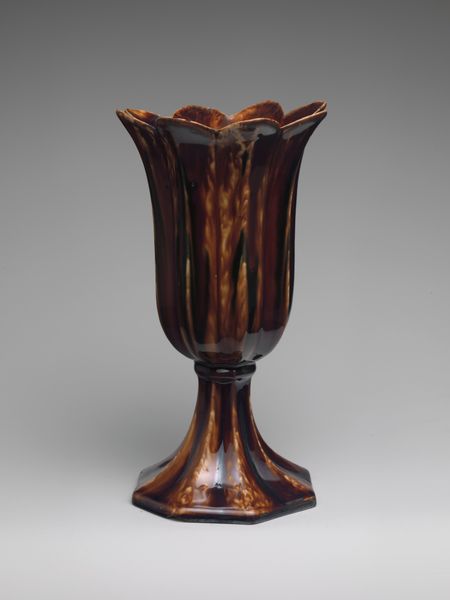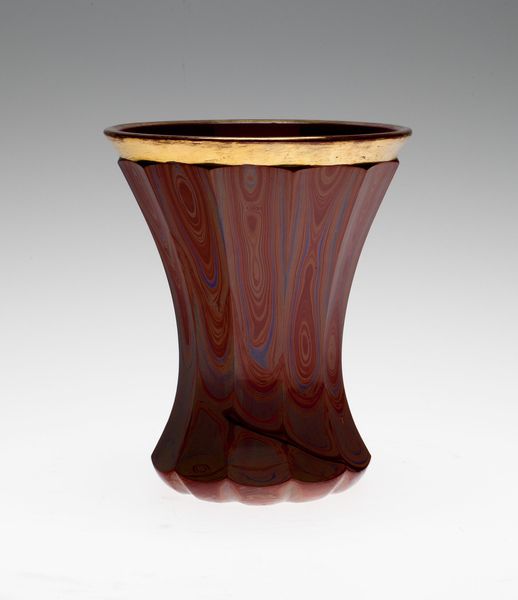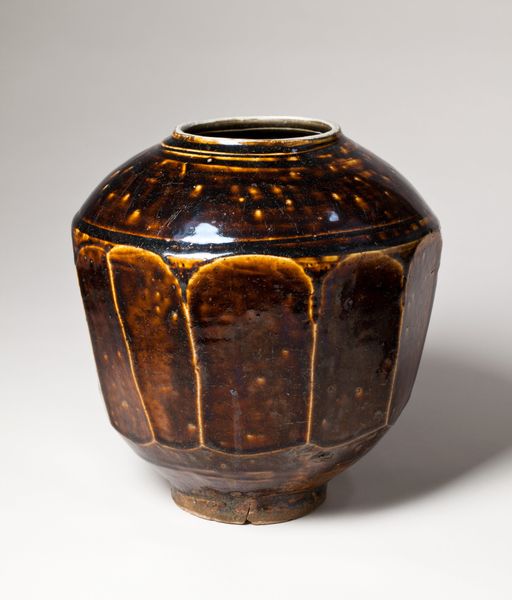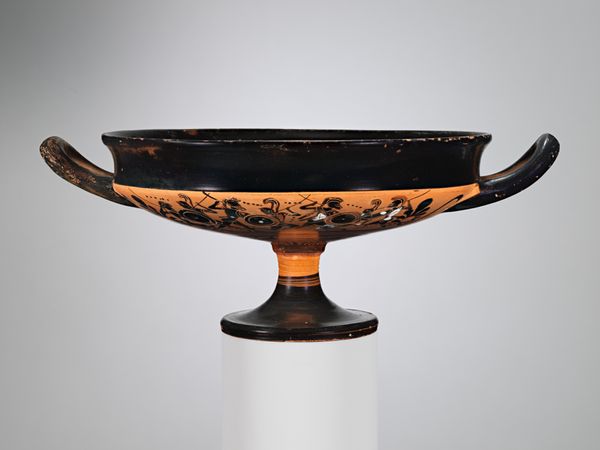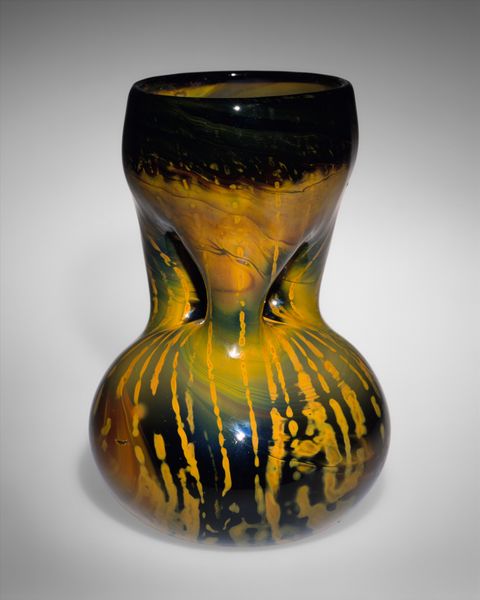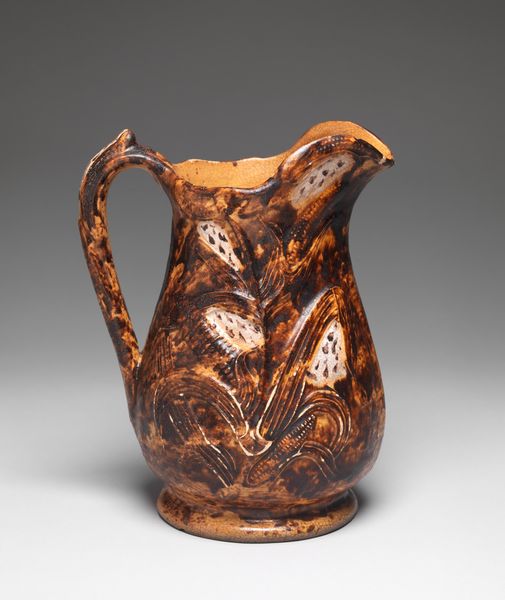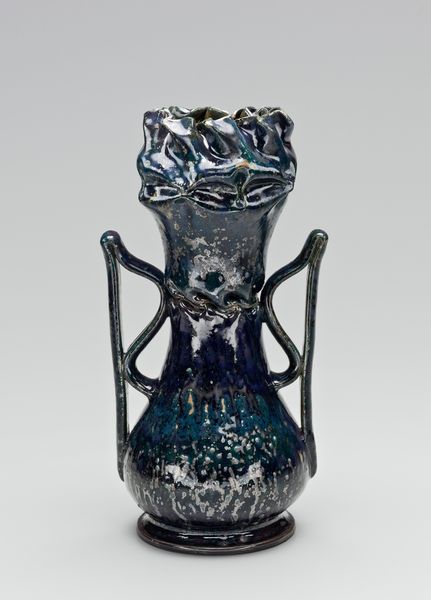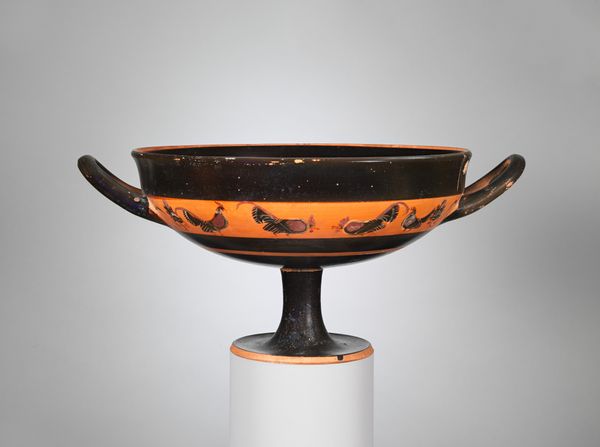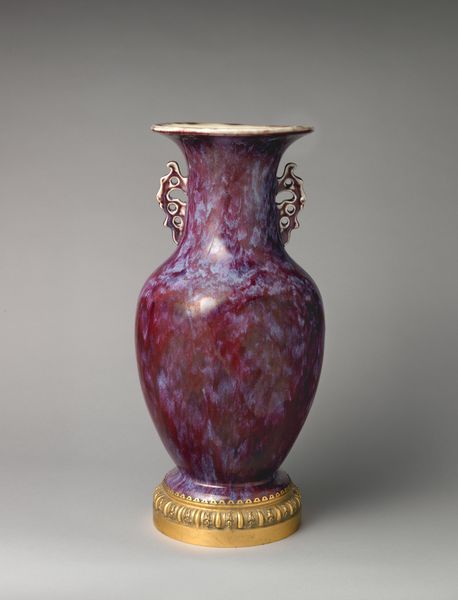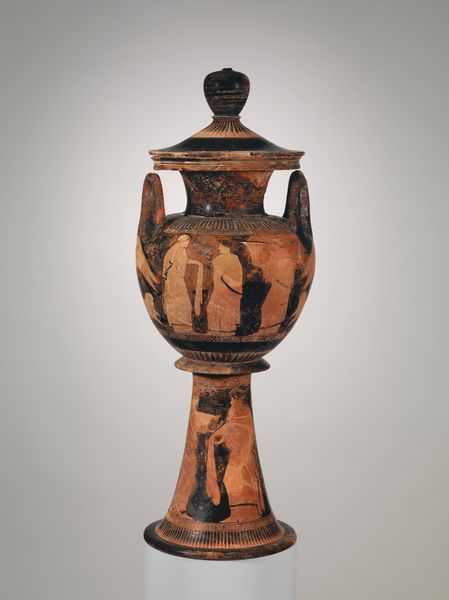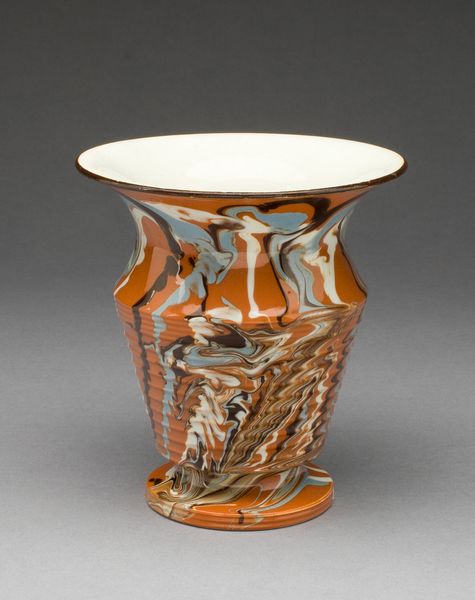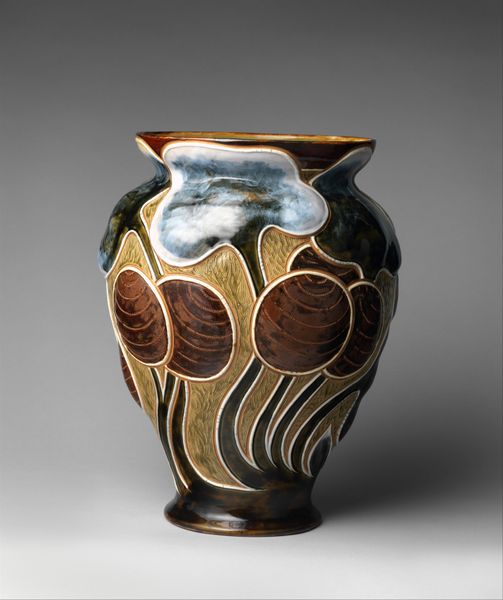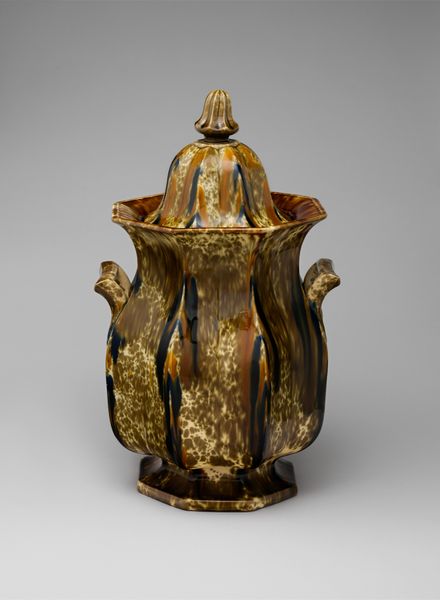
ceramic, earthenware
#
ceramic
#
earthenware
#
stoneware
#
ceramic
#
united-states
#
decorative-art
Dimensions: H. 11 1/2 in. (29.2 cm)
Copyright: Public Domain
Curator: Before us stands an earthenware vase, produced by the United States Pottery Company around 1852. Its form is quite striking. What's your initial reaction? Editor: Well, visually it is quite assertive, perhaps even a little overwrought. The mottled glaze creates an almost animalistic texture across the ceramic body. It definitely commands attention. Curator: Indeed. The variegated glaze, a hallmark of this period, attempts to imitate natural stone. One sees here an aspiration towards the luxurious through simulated material, symptomatic of American decorative arts in this era. Editor: Precisely. The faux-natural texture speaks volumes about America’s evolving relationship with nature during the Industrial Revolution. The rise of industrialization led to the proliferation of landscape painting as Americans came to see the preservation of nature as fundamental. What is further fascinating, the vase seems to mirror the same sentiment on the level of material. The public began consuming mass-produced ceramic vessels with faux textures which made the artwork more widely accessible. Curator: Absolutely. Notice the vertical amber tear-like motifs contrasting with the brown matrix. The careful distribution of these details introduces an interesting interplay between order and accident, a controlled spontaneity if you will. And the overall structure follows an almost classical form – a footed base transitioning to the flared body. Editor: One wonders, doesn't one, about the broader dissemination of these aesthetic principles through institutions. To whom did artworks such as these truly speak and to what extent was art functioning to instill an appreciation for middle-class American life? These objects tell tales beyond mere form. Curator: And yet, the interplay of light and shadow on the undulating surface creates a very compelling visual dynamic in and of itself. It is about aesthetic impact beyond sociological meaning. Editor: Yes, indeed. Art speaks through both aesthetic decisions and historical context. Finding a way to hold these two truths is often difficult but so enlightening.
Comments
No comments
Be the first to comment and join the conversation on the ultimate creative platform.
